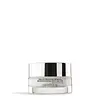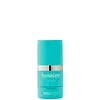What's inside
What's inside
 Key Ingredients
Key Ingredients

 Benefits
Benefits

 Concerns
Concerns

 Ingredients Side-by-side
Ingredients Side-by-side

Water
Skin ConditioningGlycerin
HumectantCaprylic/Capric Triglyceride
MaskingCoco-Caprylate
EmollientSorbitan Stearate
EmulsifyingHydrogenated Starch Hydrolysate
HumectantAcacia Senegal Gum
MaskingButyrospermum Parkii Butter
Skin ConditioningButylene Glycol
HumectantCetyl Alcohol
EmollientTocopheryl Acetate
AntioxidantSodium Acetylated Hyaluronate
HumectantSodium Hyaluronate
HumectantHydrolyzed Sodium Hyaluronate
Skin ConditioningPalmitoyl Tripeptide-5
Skin ConditioningPsilanthus Bengalensis Leaf Cell Culture Extract
Skin ConditioningAphanizomenon Flos-Aquae Extract
HumectantSodium Hyaluronate Crosspolymer
HumectantAlbizia Julibrissin Bark Extract
MaskingFraxinus Excelsior Bark Extract
Skin ConditioningRubus Idaeus Leaf Cell Culture
Skin ConditioningNiacinamide
SmoothingCaffeine
Skin ConditioningChondrus Crispus Extract
Skin ConditioningDarutoside
Skin ConditioningHydrolyzed Rhizobian Gum
Glycolic Acid
BufferingBiosaccharide Gum-1
HumectantBisabolol
MaskingPanthenol
Skin ConditioningSilanetriol
Carbomer
Emulsion StabilisingDimethicone
EmollientDisodium EDTA
Xanthan Gum
EmulsifyingSodium Hydroxide
BufferingEthylhexylglycerin
Skin ConditioningHelianthus Annuus Seed Oil
EmollientTocopherol
AntioxidantPentylene Glycol
Skin ConditioningPantolactone
HumectantSodium Benzoate
MaskingPhenoxyethanol
PreservativePotassium Sorbate
PreservativeCitric Acid
BufferingWater, Glycerin, Caprylic/Capric Triglyceride, Coco-Caprylate, Sorbitan Stearate, Hydrogenated Starch Hydrolysate, Acacia Senegal Gum, Butyrospermum Parkii Butter, Butylene Glycol, Cetyl Alcohol, Tocopheryl Acetate, Sodium Acetylated Hyaluronate, Sodium Hyaluronate, Hydrolyzed Sodium Hyaluronate, Palmitoyl Tripeptide-5, Psilanthus Bengalensis Leaf Cell Culture Extract, Aphanizomenon Flos-Aquae Extract, Sodium Hyaluronate Crosspolymer, Albizia Julibrissin Bark Extract, Fraxinus Excelsior Bark Extract, Rubus Idaeus Leaf Cell Culture, Niacinamide, Caffeine, Chondrus Crispus Extract, Darutoside, Hydrolyzed Rhizobian Gum, Glycolic Acid, Biosaccharide Gum-1, Bisabolol, Panthenol, Silanetriol, Carbomer, Dimethicone, Disodium EDTA, Xanthan Gum, Sodium Hydroxide, Ethylhexylglycerin, Helianthus Annuus Seed Oil, Tocopherol, Pentylene Glycol, Pantolactone, Sodium Benzoate, Phenoxyethanol, Potassium Sorbate, Citric Acid
Water
Skin ConditioningCaprylic/Capric Triglyceride
MaskingC12-20 Acid PEG-8 Ester
EmulsifyingGlycerin
HumectantButylene Glycol
HumectantCetyl Alcohol
EmollientPEG-8
HumectantBisabolol
MaskingCaffeine
Skin ConditioningTetrahexyldecyl Ascorbate
AntioxidantFagus Sylvatica Bud Extract
TonicLecithin
EmollientCutaneous Lysate
MoisturisingTetrapeptide-21
Skin ConditioningSodium Hyaluronate
HumectantGlycyrrhetinic Acid
Skin ConditioningTocopherol
AntioxidantCitric Acid
BufferingCapryloyl Carnosine
Skin ConditioningAscorbyl Palmitate
AntioxidantTocotrienols
Skin ConditioningElaeis Guineensis Oil
EmollientPalmitoyl Tripeptide-1 Acetate
Skin ConditioningAscorbic Acid
AntioxidantBenzoic Acid
MaskingSqualene
EmollientPhytosterols
Skin ConditioningSodium Citrate
BufferingPotassium Cetyl Phosphate
EmulsifyingPotassium Sorbate
PreservativeCaprylyl Glycol
EmollientCarbomer
Emulsion StabilisingHexylene Glycol
EmulsifyingSaccharide Isomerate
HumectantSodium Polyacrylate
AbsorbentSodium Hydroxide
BufferingDisodium EDTA
Phenoxyethanol
PreservativeBenzyl Alcohol
PerfumingWater, Caprylic/Capric Triglyceride, C12-20 Acid PEG-8 Ester, Glycerin, Butylene Glycol, Cetyl Alcohol, PEG-8, Bisabolol, Caffeine, Tetrahexyldecyl Ascorbate, Fagus Sylvatica Bud Extract, Lecithin, Cutaneous Lysate, Tetrapeptide-21, Sodium Hyaluronate, Glycyrrhetinic Acid, Tocopherol, Citric Acid, Capryloyl Carnosine, Ascorbyl Palmitate, Tocotrienols, Elaeis Guineensis Oil, Palmitoyl Tripeptide-1 Acetate, Ascorbic Acid, Benzoic Acid, Squalene, Phytosterols, Sodium Citrate, Potassium Cetyl Phosphate, Potassium Sorbate, Caprylyl Glycol, Carbomer, Hexylene Glycol, Saccharide Isomerate, Sodium Polyacrylate, Sodium Hydroxide, Disodium EDTA, Phenoxyethanol, Benzyl Alcohol
 Reviews
Reviews

Ingredients Explained
These ingredients are found in both products.
Ingredients higher up in an ingredient list are typically present in a larger amount.
Bisabolol is famous for its skin soothing properties. It does this by blocking inflammatory signals, helping to reduce your body's reaction to irritation.
This ingredient also interferes with the process of hyperpigmentation. This can help with reducing dark spots and uneven tone.
Bisabolol is an antioxidant. Antioxidants help fight free-radicals. Free-radicals are molecules that may damage your skin cells. By fighting these free-radicals, Bisabolol may slow down signs of aging.
Studies have shown Bisabolol to have antimicrobial properties and may be a fungicide. These properties help preserve a product's shelf life.
All these properties makes bisabolol a great skin barrier helper ingredient.
Bisabolol also helps the absorption of other ingredients.
Note: Synthetic Bisabolol has been shown to be less effective.
Learn more about BisabololButylene Glycol (or BG) is used within cosmetic products for a few different reasons:
Overall, Butylene Glycol is a safe and well-rounded ingredient that works well with other ingredients.
Though this ingredient works well with most skin types, some people with sensitive skin may experience a reaction such as allergic rashes, closed comedones, or itchiness.
Learn more about Butylene GlycolCaffeine is most associated with coffee, tea, and cacao. In skincare, it helps with calming inflammation and is rich in antioxidants.
While caffeine is used to treat cellulite and and dark circles, further studies are needed to prove this. It has been believed to help with these skin conditions due to its ability to dilate blood vessels and increase blood flow.
Some studies are looking into caffeine's ability to protect against UV rays.
Learn more about CaffeineThis ingredient is an emollient, solvent, and texture enhancer. It is considered a skin-softener by helping the skin prevent moisture loss.
It helps thicken a product's formula and makes it easier to spread by dissolving clumping compounds.
Caprylic Triglyceride is made by combining glycerin with coconut oil, forming a clear liquid.
While there is an assumption Caprylic Triglyceride can clog pores due to it being derived from coconut oil, there is no research supporting this.
Learn more about Caprylic/Capric TriglycerideCarbomer is a polymer of acrylic acid. Its main role is to create a gel consistency.
A high amount of carbomer can cause pilling or balling up of products. Don't worry, most products contain 1% or less of carbomer.
Cetyl Alcohol is a fatty alcohol. Fatty Alcohols are most often used as an emollient or to thicken a product.
Its main roles are:
Though it has "alcohol" in the name, it is not related to denatured alcohol or ethyl alcohol.
The FDA allows products labeled "alcohol-free" to have fatty alcohols.
Learn more about Cetyl AlcoholCitric Acid is an alpha hydroxy acid (AHA) naturally found in citrus fruits like oranges, lemons, and limes.
Like other AHAs, citric acid can exfoliate skin by breaking down the bonds that hold dead skin cells together. This helps reveal smoother and brighter skin underneath.
However, this exfoliating effect only happens at high concentrations (20%) which can be hard to find in cosmetic products.
Due to this, citric acid is usually included in small amounts as a pH adjuster. This helps keep products slightly more acidic and compatible with skin's natural pH.
In skincare formulas, citric acid can:
While it can provide some skin benefits, research shows lactic acid and glycolic acid are generally more effective and less irritating exfoliants.
Most citric acid used in skincare today is made by fermenting sugars (usually from molasses). This synthetic version is identical to the natural citrus form but easier to stabilize and use in formulations.
Read more about some other popular AHA's here:
Learn more about Citric AcidDisodium EDTA plays a role in making products more stable by aiding other preservatives.
It is a chelating agent, meaning it neutralizes metal ions that may be found in a product.
Disodium EDTA is a salt of edetic acid and is found to be safe in cosmetic ingredients.
Learn more about Disodium EDTAGlycerin is already naturally found in your skin. It helps moisturize and protect your skin.
A study from 2016 found glycerin to be more effective as a humectant than AHAs and hyaluronic acid.
As a humectant, it helps the skin stay hydrated by pulling moisture to your skin. The low molecular weight of glycerin allows it to pull moisture into the deeper layers of your skin.
Hydrated skin improves your skin barrier; Your skin barrier helps protect against irritants and bacteria.
Glycerin has also been found to have antimicrobial and antiviral properties. Due to these properties, glycerin is often used in wound and burn treatments.
In cosmetics, glycerin is usually derived from plants such as soybean or palm. However, it can also be sourced from animals, such as tallow or animal fat.
This ingredient is organic, colorless, odorless, and non-toxic.
Glycerin is the name for this ingredient in American English. British English uses Glycerol/Glycerine.
Learn more about GlycerinPhenoxyethanol is a preservative that has germicide, antimicrobial, and aromatic properties. Studies show that phenoxyethanol can prevent microbial growth. By itself, it has a scent that is similar to that of a rose.
It's often used in formulations along with Caprylyl Glycol to preserve the shelf life of products.
Potassium Sorbate is a preservative used to prevent yeast and mold in products. It is commonly found in both cosmetic and food products.
This ingredient comes from potassium salt derived from sorbic acid. Sorbic acid is a natural antibiotic and effective against fungus.
Both potassium sorbate and sorbic acid can be found in baked goods, cheeses, dried meats, dried fruit, ice cream, pickles, wine, yogurt, and more.
You'll often find this ingredient used with other preservatives.
Learn more about Potassium SorbateSodium Hyaluronate is hyaluronic acid's salt form. It is commonly derived from the sodium salt of hyaluronic acid.
Like hyaluronic acid, it is great at holding water and acts as a humectant. This makes it a great skin hydrating ingredient.
Sodium Hyaluronate is naturally occurring in our bodies and is mostly found in eye fluid and joints.
These are some other common types of Hyaluronic Acid:
Learn more about Sodium HyaluronateSodium Hydroxide is also known as lye or caustic soda. It is used to adjust the pH of products; many ingredients require a specific pH to be effective.
In small amounts, sodium hydroxide is considered safe to use. However, large amounts may cause chemical burns due to its high alkaline.
Your skin has a natural pH and acid mantle. This acid mantle helps prevent harmful bacteria from breaking through. The acid mantle also helps keep your skin hydrated.
"Alkaline" refers to a high pH level. A low pH level would be considered acidic.
Learn more about Sodium HydroxideTocopherol (also known as Vitamin E) is a common antioxidant used to help protect the skin from free-radicals and strengthen the skin barrier. It's also fat soluble - this means our skin is great at absorbing it.
Vitamin E also helps keep your natural skin lipids healthy. Your lipid skin barrier naturally consists of lipids, ceramides, and fatty acids. Vitamin E offers extra protection for your skin’s lipid barrier, keeping your skin healthy and nourished.
Another benefit is a bit of UV protection. Vitamin E helps reduce the damage caused by UVB rays. (It should not replace your sunscreen). Combining it with Vitamin C can decrease sunburned cells and hyperpigmentation after UV exposure.
You might have noticed Vitamin E + C often paired together. This is because it is great at stabilizing Vitamin C. Using the two together helps increase the effectiveness of both ingredients.
There are often claims that Vitamin E can reduce/prevent scarring, but these claims haven't been confirmed by scientific research.
Learn more about TocopherolWater. It's the most common cosmetic ingredient of all. You'll usually see it at the top of ingredient lists, meaning that it makes up the largest part of the product.
So why is it so popular? Water most often acts as a solvent - this means that it helps dissolve other ingredients into the formulation.
You'll also recognize water as that liquid we all need to stay alive. If you see this, drink a glass of water. Stay hydrated!
Learn more about Water